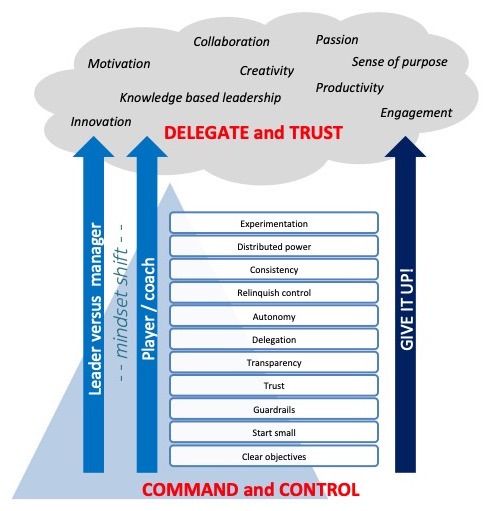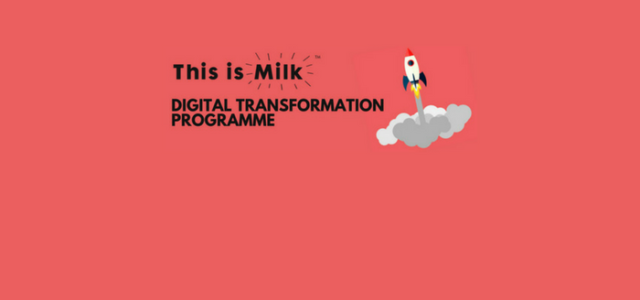Transitioning people through constant change. In this series of posts, I am exploring the Give It Up model in which we move away from the command and control of manager to the delegation and trust of true leaders.

Knowledge-based leadership
When leaders delegate and trust, leadership becomes based on knowledge. Trust overcomes the tendency for people to keep knowledge to themselves believing that it gives them a position of power in the organisation and allows for the discovery and sharing of knowledge possessed by the whole of the organisation.
Knowledge sharing gives the organization the competitive advantage. Knowledge-based leadership can take an outline of an idea and seek multiple ideas from multiple sources; thereby, using the full capabilities of the organization to solve problems or seize opportunities.
Knowledge-based leadership is about everyone in the organization having access to information. A lack of trust can increase risk when making decisions, as the knowledge needed to make informed decisions may not be available. Information must be equally available to everyone.
Knowledge-based leadership relies on open communication across the organization, the exchange of ideas and experiences, and regular dialogue where everyone has a voice and what they have to say is respected.
When organizations capture, store, and distribute knowledge, it stimulates continual innovation.
Resilience also depends on knowledge availability. When faced with relentless change, everyone needs the ability to act quickly and have the knowledge to make fast decisions. If decisions have to be referred elsewhere in the organization, opportunities can be missed and problems left unresolved. Therefore, not sharing knowledge is not an option. The risk is too high.
Collaboration
Giving up control fosters collaboration. It allows for collaborative innovation and experimentation. Information can be shared across collaborative networks in ways that wouldn’t work in hierarchical command and control environments.
There are great examples of collaboration. We often think of Albert Einstein as a lone genius, when in fact the theory of relativity was a collaborative work of Einstein and his colleagues and friends. Two of the key collaborators were March Grossman (a mathematician) and Michelle Besso (an engineer).
Another great example is the five New Yorkers (two of them were roommates) who set about trying to not only improve the sleep experience through a better mattress but also improve the purchasing experience by being able to buy a mattress in a box—no more heavy lifting upstairs. The five consisted of Parikh, the natural salesman (now COO), Krim, a mattress expert (now CEO), Sherwin, a brand specialist, Flateman, an online presence expert, and Chapin a stylist and expert in human-centred design. The five formed Casper, and in 2018, in only its third full year, the total revenue had grown to $600 million. [i]
It was the collaboration of the team and the diversity of knowledge and expertise that enabled them to solve the problem of how to create not only a great mattress but also one that could be delivered in a box
Collaboration is a critical component of organizational success. Collaboration means that people don’t try and resolve problems alone, they seek out the help of others. Collaboration results in increased energy and motivation.
The greatest advancements and the most effective decision-making comes about through the collaboration of many minds. In a world of constant and relentless change, staying ahead of the game can only be achieved through leveraging a more extensive network of knowledge, breaking down silos, and working collaboratively
Game score
Winning teams don’t do great things because they were told to. They have the power to make great things happen. They are free to experiment, create and innovate.
In subsequent posts in this series, I will be exploring the additional elements of the Give It Up model.
Article by channel:
Everything you need to know about Digital Transformation
The best articles, news and events direct to your inbox
Read more articles tagged: Change & Transformation, Collaboration, Featured, Leadership







